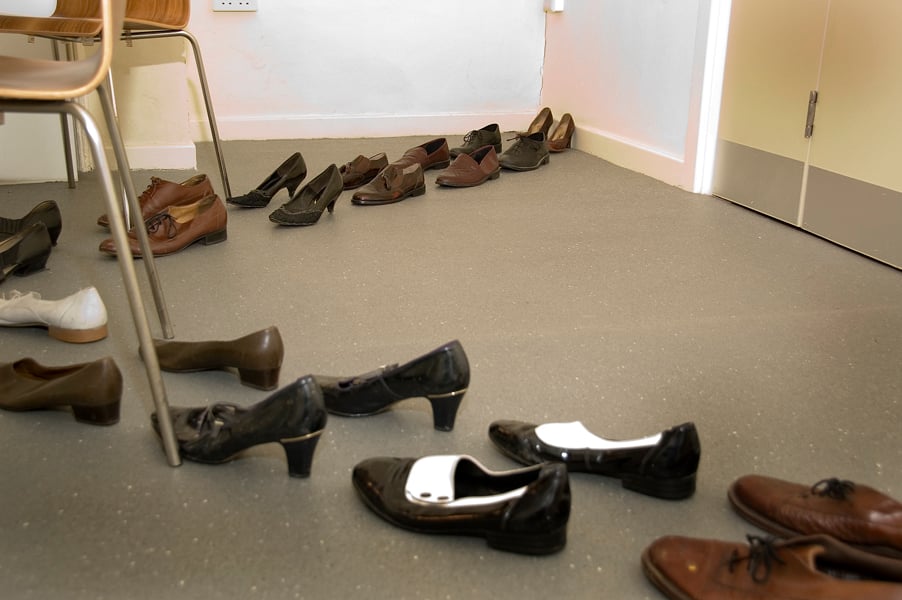
Photo: Phyllis Christopher
Getting more from trusts and foundations
How can small arts organisations fundraise more efficiently? Joanna Ridout shares her tips for attracting greater investment whilst filling in fewer forms.
Many in the independent theatre sector work in small, regional companies working at capacity. Fundraising is a regular part of their work and most have enjoyed some success but, in common with many arts organisations, particularly smaller ones working outside urban areas, they are feeling the pressure of markedly increased competition for charitable funding. Whilst working with Twine – a Catalyst Arts supported project – to maximize the chances of attracting significant and sustained investment in this climate we focused on four principles:
1. Be clear about the big picture
The need to know and be able to articulate the value of your organisation in inspiring language is key. It is critical that any organisation looking for investment is first really clear and articulate about its purpose: what they do, why and who for. It is also important to have a strong sense of where the organisation is going, before talking to potential investors. Sustainable relationships will only happen if investors are convinced by compelling ideas and join a journey, rather than tossing a few pounds towards a short-lived project.
2. Build relationships and value investors
Building investment partnerships takes time, effort, mutual understanding and respect
It is important to remember that fundraising is about adult-to-adult relationships, rather than adult-to-child or begging, and that the legally bound purpose of trusts and foundations is to invest in making the world a better place. Rather than ‘pitching’ an idea, explore the investor’s values, see it from their perspective, appreciate what they are actually looking for and have a conversation. Remember that there are people behind the application forms who want to work with imaginative creators.
Get into the habit of researching all about potential investors (their website, guidelines, annual reports, application processes, charity commission website entries and funding records) and then making a real, personal connection beyond the published information. In a world where everything is done online, there is real value in picking up the phone to ask genuine, open questions to find out what people really want beyond the printed word and how you can best give them the information they need and explain what you do and want in a language they will appreciate.
Particularly with charitable funders it is important to pinpoint shared values and to check that you are trying to have the same kind of impact as them. Both the arts organisation and charity are investing in a creative journey and together you can increase the value and the impact. Levels of direct involvement vary, but some appreciate involvement in the planning process or other ways of gaining a fuller picture of how you work. Think about how you build effective partnerships in other (non-fundraising) areas of work and try some of the same tactics.
Building investment partnerships takes time, effort, mutual understanding and respect. If arts organisations build investment partnerships with the same care they take building artistic and audience relationships, then they will become much more valued and attract considerably more, lasting investment for the future.
3. Get into the habit
Fundraising shouldn’t be a one-off or occasional activity, or only the domain of one person, but part of regular good company management to which everyone contributes. Most people would receive short shrift if they chose not to get round to paying weekly performers’ wages – working on fundraising should be built into the day-to-day fabric of any company in the same way, to ensure there will be funds available to pay the weekly wages.
It is useful to have several levels of enquiry in progress at any time, from basic research to gathering information and planning specific approaches (a bit like the range and levels of ongoing work on different artistic projects). Making huge, occasional efforts at raising funds is far less effective and efficient than establishing a rolling programme of work with a range of potential and actual investors.
4. Establish time out to develop thinking with peers
Taking time to develop your thinking about your work and how you articulate it with critical friends could be a very wise business decision. Continuously paddling furiously to keep up and ignoring opportunities for shared learning is unlikely to generate new ideas or approaches, whereas learning that builds over time can be a powerful force for development, growth and gaining investment.
One way to facilitate this sort of peer support is through an action learning set. A simple alternative is to invite a friend or colleague to ask you challenging, open questions and to really listen to your uninterrupted responses; the principle being that you already know the answers, you just need to uncover them and formulate action plans.
Twine Catalyst consortium members found it useful and affirming to work on real issues together, challenging each other as critical friends in a focused, supportive way and adding to their fundraising knowledge and skills. The act of taking time out to really hear each other, to understand and hone each other’s messages in a peer group also enabled them to find ways of working together beyond Catalyst.
Booking time out with critical friends can feel like a luxury, but if it helps to reinforce learning, spark ideas and refine messages, it can more than pay for itself in real investment. Ignoring the value of making time to gain fresh perspectives and finding ways of levering additional investment is a high-risk strategy.
Joanna Ridout is a creative consultant, facilitator and trainer.
This article, sponsored and contributed by Twine, is part of a series exploring the fundraising challenges faced by small touring theatre companies.

Join the Discussion
You must be logged in to post a comment.